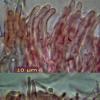
15-12-2025 07:09
 Danny Newman
Danny Newman
indet. Rutstroemiaceae sp. on unk. fallen leavesMc

15-12-2025 21:11
 Hardware Tony
Hardware Tony
Small clavate hairs, negative croziers and IKI bb

15-12-2025 15:54
 Johan Boonefaes
Johan Boonefaes
Unknown anamorph found on the ground in coastal sa

15-12-2025 15:48
 Danny Newman
Danny Newman
Melanospora cf. lagenaria on old, rotting, fallen

15-12-2025 07:05
 Danny Newman
Danny Newman
Pseudosclerococcum golindoi (det: Zotto)near Cosb

15-12-2025 11:49
 Danny Newman
Danny Newman
ITS sequences from the following two collections B

15-12-2025 12:34
 Danny Newman
Danny Newman
indet. Rhytismataceae on oak leafnear Purchase Roa

09-12-2025 12:06
 Andgelo Mombert
Andgelo Mombert
Bonjour,Je recherche l'article concernant Hypobryo
Protounguicularia/Olla transiens
Martin Bemmann,
13-12-2009 12:19
 Hello,
Hello,in my last posting I showed in the end some hairs, that had been identified by Zotto as belonging to an Olla transiens. Meanwhile I did some more documentation of it.
I found this fungus last week in Heidelberg, Germany in the castle's park. Substrate is a dead twig of Prunus avium lying on the ground. The apothecia appear on decorticated parts of it.
Size of the apothecia is c. 200-250 µm, urceolate when young, older specimen more disk shaped.
Martin Bemmann,
13-12-2009 12:25
Martin Bemmann,
13-12-2009 12:29
Martin Bemmann,
13-12-2009 12:35
Martin Bemmann,
13-12-2009 12:36
Martin Bemmann,
13-12-2009 12:37
Hans-Otto Baral,
13-12-2009 12:45

Re:Protounguicularia/Olla transiens
I can only confirm Protounguicularia/Olla transiens
Martin Bemmann,
13-12-2009 12:46

Re:Protounguicularia/Olla transiens
When I compare my find with the documentations on Zotto's DVD Olla transiens fits very well. But going into the paper by Huhtinen/Hawkswoth/Ihlen 2008 who combined O.t. to Protounguicularia I don't feel comfortable. For instance form and size of spores are different and asci are "stalked".
How should I name my find?
Best regards
Martin
How should I name my find?
Best regards
Martin
Hans-Otto Baral,
13-12-2009 12:52

Re:Protounguicularia/Olla transiens
Hi Martin
I do not find P./O. transiens described in this paper. It is only combined there, isn't it? By the way, your ascus is turgescent and therefore less stalked than a dead ascus would be.
Zotto
I do not find P./O. transiens described in this paper. It is only combined there, isn't it? By the way, your ascus is turgescent and therefore less stalked than a dead ascus would be.
Zotto
Martin Bemmann,
13-12-2009 12:53

Re:Protounguicularia/Olla transiens
Hi Zotto,
you allready answered before I asked ;-)
So do you think it would fit into the concept of P.t. sensu Huhtinen?
regards,
martin
you allready answered before I asked ;-)
So do you think it would fit into the concept of P.t. sensu Huhtinen?
regards,
martin
Martin Bemmann,
13-12-2009 12:57

Re:Protounguicularia/Olla transiens
yes, maybe I misunderstood the article as thinking transiens differs from nephromatis by the chemical reaction of the hairs only (p.555). I will have to find a copy of Huhtinens monograph!
Thank you
Martin
Thank you
Martin
Stip Helleman,
13-12-2009 17:13

Re:Protounguicularia/Olla transiens
Hi Martin,
Here you get a good descriptive article:
cheers Stip
Here you get a good descriptive article:
cheers Stip
Martin Bemmann,
13-12-2009 20:24

Re:Protounguicularia/Olla transiens
Thank you Stip for providing this article on the type species of Protounguicularia. It gave me more insight and presents convincing features of this genus.
The bitter pill is that my last fungus Hyaloscypha quercicola/quercina showing almost no hairs should be the same as the featured P. barbata.
I have to learn much about variability...
Cheers,
Martin
The bitter pill is that my last fungus Hyaloscypha quercicola/quercina showing almost no hairs should be the same as the featured P. barbata.
I have to learn much about variability...
Cheers,
Martin
Hans-Otto Baral,
13-12-2009 21:00

Re:Protounguicularia/Olla transiens
It's also a mystery for me that Hyaloscypha may have rather distinct glassy hair apices very similar to Protounguicularia. Here is a photo by Ingo Wagner of what we believe is Hyaloscypha intacta. The upper hairs were also found in this population. Generic limits are very very difficult sometimes.
Zotto
Zotto
Martin Bemmann,
13-12-2009 21:52

Re:Protounguicularia/Olla transiens
Thank you Zotto for sharing my unease!
I knew Ingo's collection (and the following discussion), but I didn't take it into consideration, the hairs beeing so different to my find.
Maybe this genus has season now and I will try to make more collections to compare.
Cheers,
Martin
I knew Ingo's collection (and the following discussion), but I didn't take it into consideration, the hairs beeing so different to my find.
Maybe this genus has season now and I will try to make more collections to compare.
Cheers,
Martin
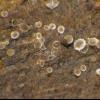
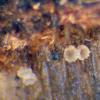
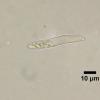
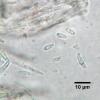
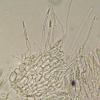
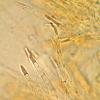
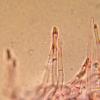
 9832.pdf
9832.pdf